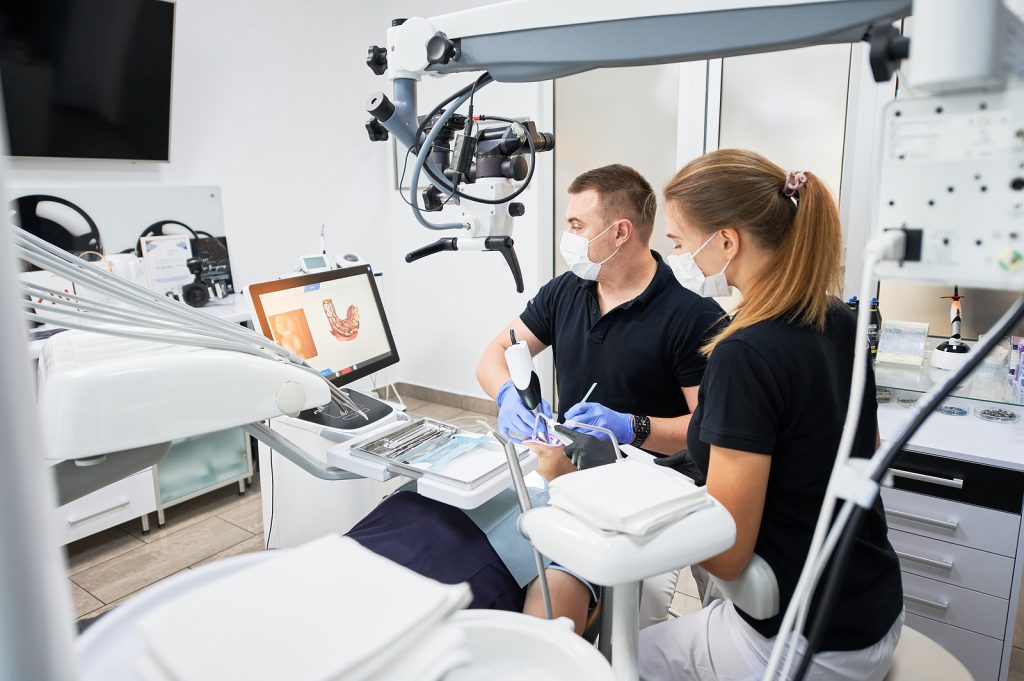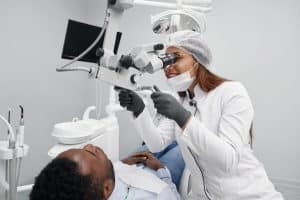Dental care is evolving, and 3D printing dentistry is leading the way. This technology is changing how dentists repair and replace teeth, offering faster and more precise solutions. Patients no longer have to wait weeks for crowns, bridges, or dentures. In many cases, these restorations can be made on the same day.
Traditional methods rely on molds, lab work, and multiple visits. 3D printing eliminates many of these steps, making treatment more efficient. Dentists can now create restorations with greater accuracy and customization. As this technology advances, it will continue to reshape the future of restorative dentistry, including treatments like clear aligner in Puyallup.
What Is 3D Printing Dentistry?
3D printing dentistry uses digital scans and advanced printers to create dental restorations, models, and surgical guides. Instead of relying on traditional molds and manual fabrication, this process builds precise dental pieces layer by layer.
How It Works
The process begins with a digital scan of the patient’s teeth. This scan is then used to design a restoration with computer software. Once finalized, a 3D printer creates the piece using specialized materials like biocompatible resin, ceramic, or metal.
Key Components of 3D Printing in Dentistry
- Digital Scanners – Capture detailed images of the teeth, replacing physical impressions.
- 3D Printers – Use precise technology to print dental restorations with high accuracy.
- Biocompatible Materials – Include resins, ceramics, and metals designed for safe and long-lasting use.
Dentists can now produce crowns, dentures, and implants with improved speed and quality. This technology is making restorative procedures more convenient and accessible for both patients and practitioners.
How 3D Printing Is Changing Restorative Dentistry
3D printing dentistry is transforming the way dentists repair and replace teeth. Traditional methods require multiple appointments, lab work, and adjustments. With 3D printing, these steps are simplified, making the process faster and more precise.
Faster Turnaround for Restorations
- Same-day crowns and bridges eliminate the need for temporary restorations.
- Dentures and implants can be produced in a fraction of the time compared to traditional lab-made options.
- Patients spend less time in the chair and more time enjoying their results.
More Precision and Customization
- Digital scans create exact replicas of a patient’s teeth, leading to better-fitting restorations.
- The margin for error is smaller since designs are digitally optimized before printing.
- Aesthetics and function improve, providing a more natural look and feel.
Lower Costs for Dentists and Patients
- Traditional dental lab fees can be expensive. 3D printing reduces reliance on third-party labs.
- Materials are used efficiently, minimizing waste and cutting production costs.
- Patients benefit from more affordable treatment options without sacrificing quality.
3D printing dentistry is making restorative care more efficient, cost-effective, and accessible. As the technology continues to improve, dental treatments will become even more advanced and patient-friendly.
Key Applications of 3D Printing in Dentistry
3D printing dentistry is being used across multiple areas of restorative care. It allows for quicker production, better precision, and more affordable solutions for patients. Dentists can now create custom restorations and appliances with minimal delays.
Dental Crowns and Bridges
- Traditionally, crowns and bridges take weeks to manufacture in a lab.
- With 3D printing, they can be designed and produced in a single visit.
- The fit and aesthetics are highly accurate, reducing the need for adjustments.
Dentures
- Full and partial dentures can be printed with better accuracy than traditional methods.
- Patients receive comfortable, well-fitted prosthetics faster.
- The digital process ensures more consistency in design and function.
Dental Implants
- 3D-printed surgical guides help dentists place implants with higher precision.
- Custom implant abutments improve comfort and functionality.
- Patients experience shorter recovery times and better long-term results.
Orthodontic Aligners
- Clear aligners can be produced quickly with digital scanning and 3D printing.
- Patients receive a series of aligners faster, reducing overall treatment time.
- The technology allows for more personalized treatment plans.
Temporary Restorations
- Short-term solutions like temporary crowns and bridges can be printed immediately.
- Patients avoid long waiting periods while permanent restorations are being made.
- The process improves overall treatment efficiency.
3D printing dentistry is changing the way these restorations and appliances are created. With faster production times and improved accuracy, both dentists and patients benefit from this advanced technology.
Advantages of 3D Printing Dentistry for Patients and Dentists
3D printing dentistry is not just about speed and precision—it also offers significant benefits for both patients and dental professionals. The improved efficiency, customization, and cost savings make it a valuable tool in modern dental care.
Benefits for Patients
- Faster Treatment: Restorations like crowns, bridges, and dentures can be completed in a single visit.
- Improved Comfort: Digital scans provide more accurate impressions, reducing discomfort from traditional molds.
- Better Aesthetics: High-quality materials create restorations that blend seamlessly with natural teeth.
- Lower Costs: More efficient production methods help reduce overall treatment expenses.
- Fewer Appointments: Shorter wait times mean fewer trips to the dentist.
Benefits for Dentists
- Streamlined Workflow: Digital design and printing eliminate manual steps, making processes more efficient.
- Greater Control: Dentists can oversee every step of the design and fabrication process.
- Reduced Lab Dependence: In-house printing minimizes the need for external labs, cutting costs and delays.
- More Predictable Outcomes: Digital accuracy leads to fewer errors and better long-term results.
- Eco-Friendly Approach: Less material waste makes 3D printing a more sustainable option.
The advantages of 3D printing dentistry extend beyond convenience. It enhances patient care while improving efficiency for dental professionals. As this technology continues to evolve, it will further reshape the dental industry.
The Future of 3D Printing in Dentistry
3D printing dentistry is advancing rapidly, and the possibilities continue to grow. As technology evolves, treatments will become even more efficient, precise, and accessible. The next generation of 3D printing is set to push the boundaries of restorative care.
Emerging Advancements
- AI-Driven Design: Artificial intelligence is being integrated with 3D printing to enhance accuracy and automate customization.
- Improved Materials: Stronger, more durable biocompatible materials are being developed for longer-lasting restorations.
- Faster Printing Speeds: Newer printers are reducing production times even further, making same-day restorations more common.
Potential for Bio-Printing
- Researchers are exploring the ability to print dental tissues and even real teeth.
- Bio-printing could lead to natural tooth regeneration, reducing the need for synthetic restorations.
- This innovation may redefine restorative dentistry by offering biological replacements instead of artificial materials.
More Accessibility for Patients
- As costs decrease, more dental practices will be able to adopt 3D printing technology.
- Patients in remote or underserved areas could benefit from on-site dental restoration production.
- The increased efficiency may lead to more affordable treatment options worldwide.
3D printing dentistry is still evolving, but its impact on dental care is undeniable. As new advancements emerge, the future of restorative dentistry will continue to improve, offering better solutions for patients and professionals alike.
Conclusion: A Transformative Shift in Smile Repair
3D printing dentistry is reshaping restorative care by making treatments faster, more precise, and cost-effective. Patients no longer have to wait weeks for crowns, bridges, or dentures. With digital scanning and advanced printing technology, dentists can create highly accurate restorations in a fraction of the time.
This innovation benefits both patients and dental professionals. Shorter treatment times, improved comfort, and lower costs make dental care more accessible. For dentists, greater control over the production process leads to better outcomes and a more efficient workflow.
As technology advances, the role of 3D printing in dentistry will continue to expand. From AI-driven designs to bio-printing real teeth, the future holds even more possibilities. The shift toward digital dentistry is not just a trend—it’s a lasting transformation that is improving the way smiles are restored.
Take the Next Step Toward a Healthier, More Confident Smile
Advancements like 3D printing are transforming dental care, making treatments faster and more precise. At Smiles Orthodontics, we embrace cutting-edge technology to ensure every patient receives the highest level of care. Whether you’re considering Invisalign or traditional braces, our experienced team is here to guide you through a treatment plan that fits your needs.
Our board-certified specialists, Dr. Bobby Virk and Dr. Helena Skountrianos, bring years of expertise in orthodontics. From personalized consultations to innovative treatment options, we focus on delivering results that improve both function and aesthetics.
Get started today with a free consultation. Contact Smiles Orthodontics to explore treatment options designed for you.



